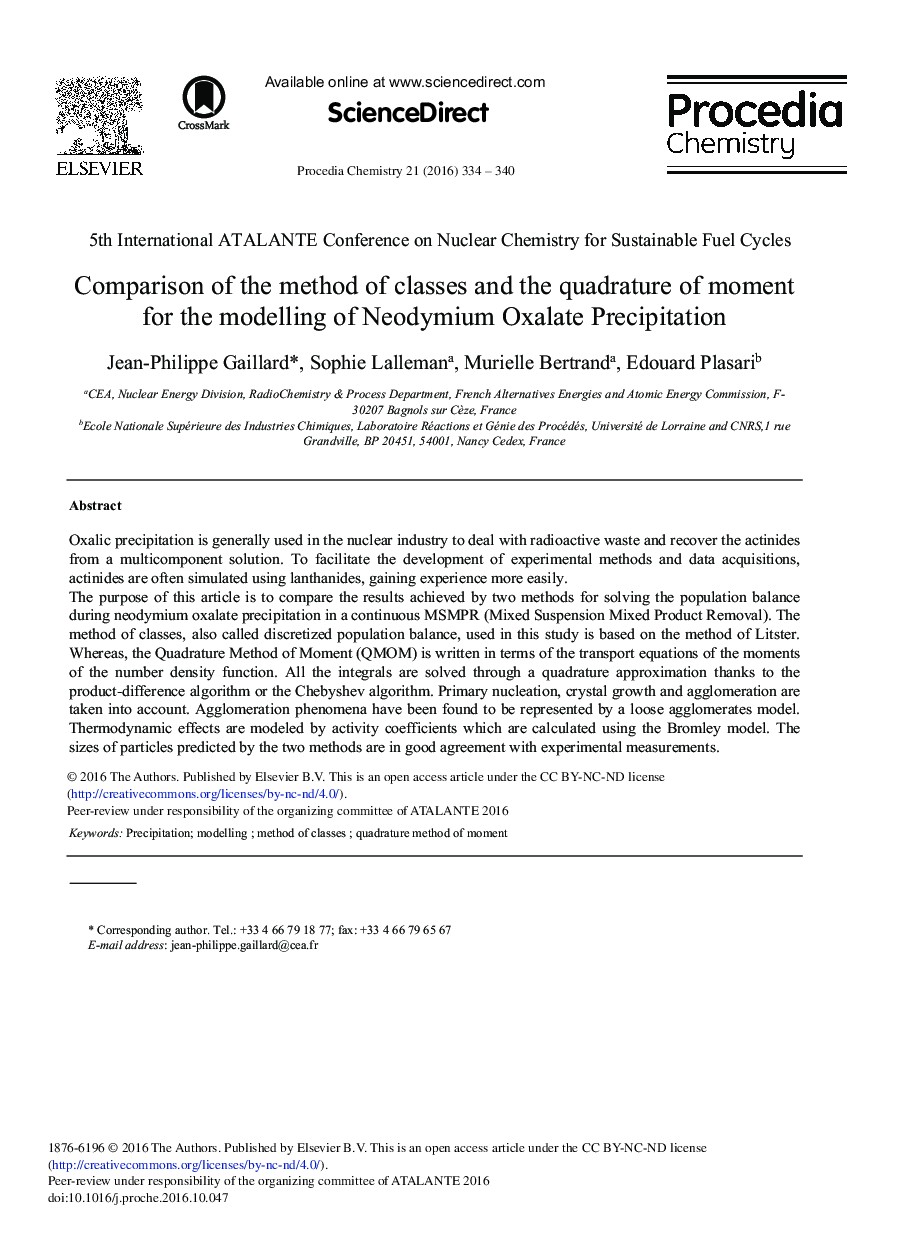| Article ID | Journal | Published Year | Pages | File Type |
|---|---|---|---|---|
| 4910948 | Procedia Chemistry | 2016 | 7 Pages |
Oxalic precipitation is generally used in the nuclear industry to deal with radioactive waste and recover the actinides from a multicomponent solution. To facilitate the development of experimental methods and data acquisitions, actinides are often simulated using lanthanides, gaining experience more easily.The purpose of this article is to compare the results achieved by two methods for solving the population balance during neodymium oxalate precipitation in a continuous MSMPR (Mixed Suspension Mixed Product Removal). The method of classes, also called discretized population balance, used in this study is based on the method of Litster. Whereas, the Quadrature Method of Moment (QMOM) is written in terms of the transport equations of the moments of the number density function. All the integrals are solved through a quadrature approximation thanks to the product-difference algorithm or the Chebyshev algorithm. Primary nucleation, crystal growth and agglomeration are taken into account. Agglomeration phenomena have been found to be represented by a loose agglomerates model. Thermodynamic effects are modeled by activity coefficients which are calculated using the Bromley model. The sizes of particles predicted by the two methods are in good agreement with experimental measurements.
